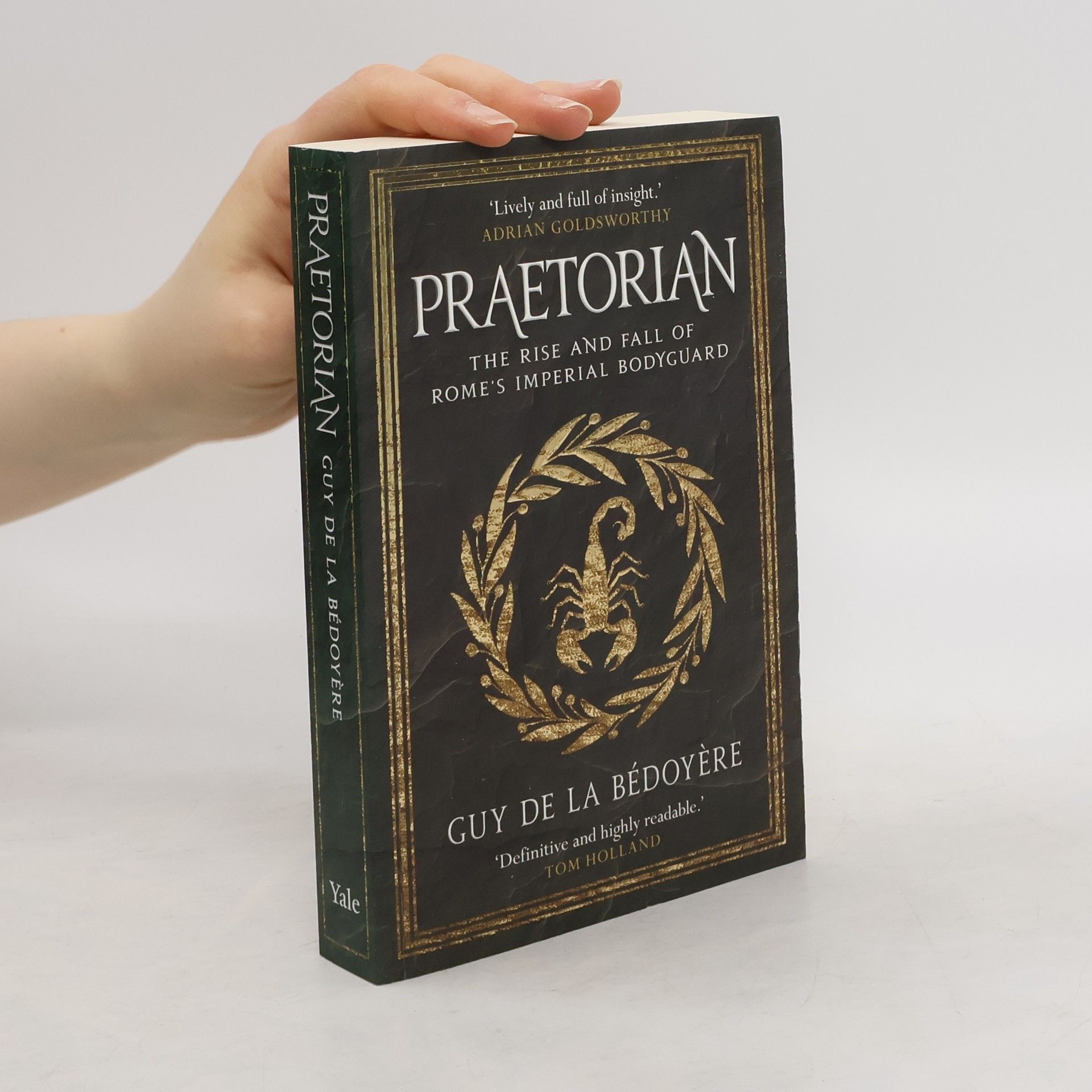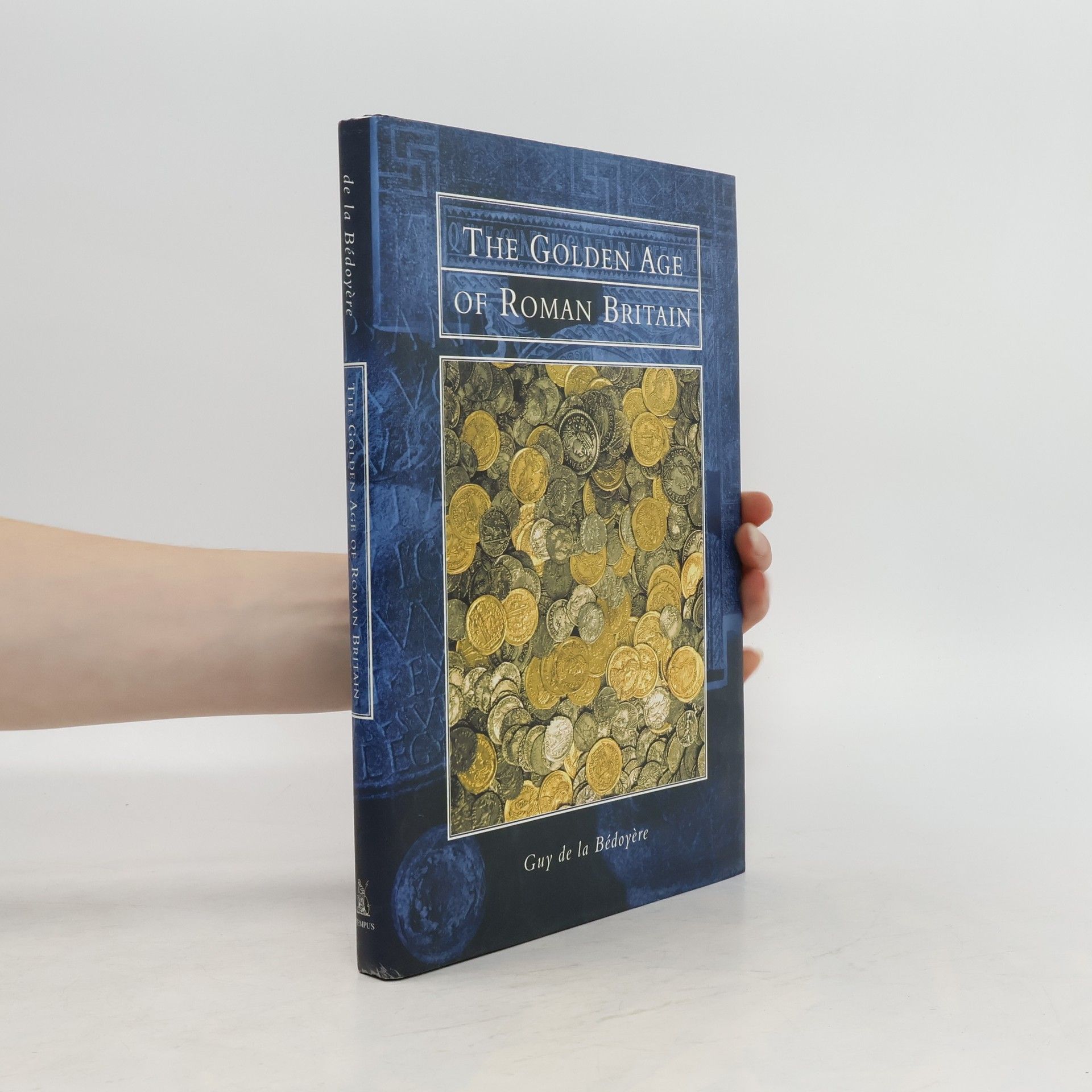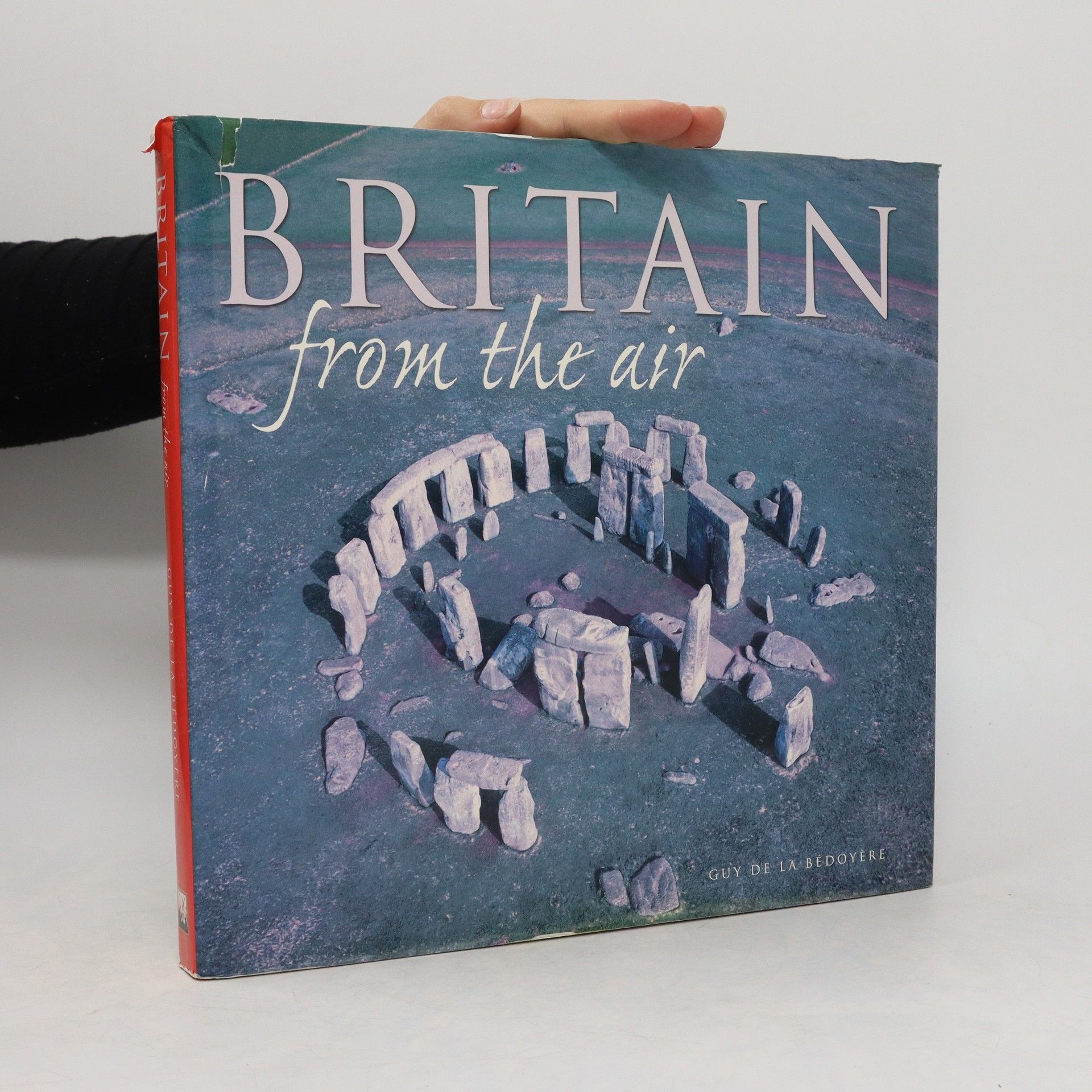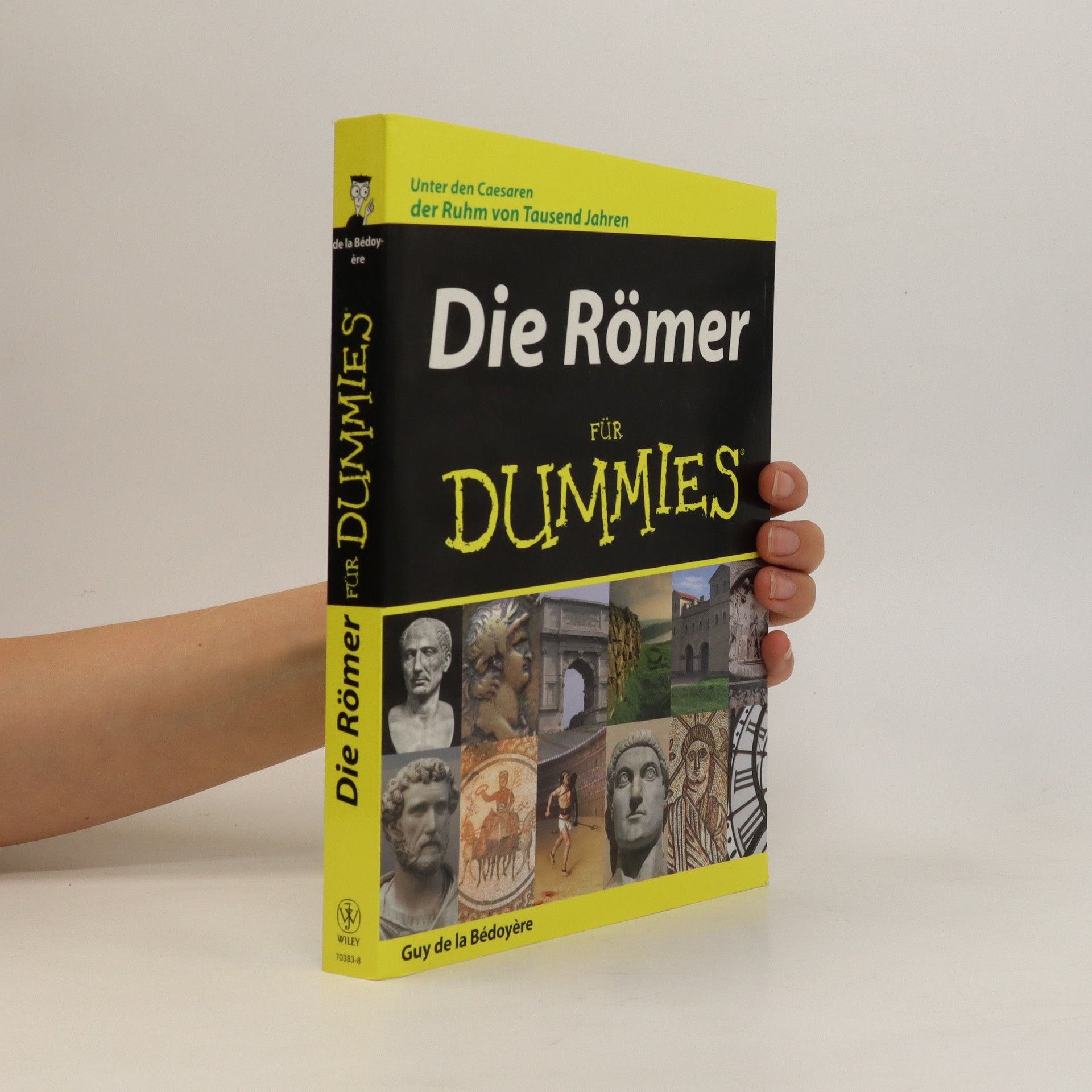This book places the remains of great houses such as Bignor and Chedworth and treasures like Thetford and Hoxne in their historical, literary and social context
DE LA BEDOYERE GUY Libros






Guy de la Bedoyere's new book is a history of a key period in ancient Egypt's astonishing history that tears away the gold and glamour to show how some of the first great historical personalities ruled Egypt ruthlessly for 250 years between 1550 BC and 1295 BC.
Guy de la Bedoyere's gripping narrative history gives a sense of what it was like to be a soldier in the army that brought the Romans their empire
Praetorian
- 344 páginas
- 13 horas de lectura
A riveting account of ancient Rome's imperial bodyguard, the select band of soldiers who wielded the power to make--or destroy--the emperors they served Founded by Augustus around 27 B.C., the elite Praetorian Guard was tasked with the protection of the emperor and his family. As the centuries unfolded, however, Praetorian soldiers served not only as protectors and enforcers but also as powerful political players. Fiercely loyal to some emperors, they vied with others and ruthlessly toppled those who displeased them, including Caligula, Nero, Pertinax, and many more. Guy de la B doy re provides a compelling first full narrative history of the Praetorians, whose dangerous ambitions ceased only when Constantine permanently disbanded them. de la B doy re introduces Praetorians of all echelons, from prefects and messengers to artillery experts and executioners. He explores the delicate position of emperors for whom prestige and guile were the only defenses against bodyguards hungry for power. Folding fascinating details into a broad assessment of the Praetorian era, the author sheds new light on the wielding of power in the greatest of the ancient world's empires.
A captivating popular history that shines a light on the notorious Julio- Claudian women who forged an empire
The Confessions of Samuel Pepys
- 304 páginas
- 11 horas de lectura
A collection of the most personal aspects of Samuel Pepys' diaries, to celebrate the 200th anniversary of their publication The Diary of Samuel Pepys (1633-1703) is the most famous published diary in the English language. This collection will target Pepys's sexual behaviour, his relations with women (which included mistresses, servants, his wife, casual encounters, and women of rank) in order to provide a compelling insight into the mind of a seventeenth-century man of professional status who lived in and worked in the heart of London during tumultuous times.
A Time Travellers Guide to Ancient Rome - by one of the best historians of the ancient worldLiving in ancient Rome was superbly and vividly recorded by Rome's historians, philosophers, and poets who were acutely aware of the seething and voluptuous nature of a city that ruled the known world. Through the words of Tacitus, Seneca, Martial, and a host of others including ordinary Romans, Guy de la Bedoyere takes the reader into a world of violent politics, civil disorder, unspeakably brutal entertainments, extravagance, decadence, eroticism, exotica, and staggering inequality, participated in daily by the Roman people from the hyper-rich elite to the lowliest slaves. Populus places those who experienced Rome in person at the forefront of their story, from the rabble-rousing senator Clodius Pulcher to Pliny the Elder and Hortensia who defended the rights of women in court to the ex-slave and celebrity baker Eurysaces.
Britain from the air
- 200 páginas
- 7 horas de lectura
Britain From The Airshowcases 150 of Britain's best-loved locations with captivating photographs taken from the air, enabling the reader to contemplate them from a fresh view point. Discover new facets to Ben Nevis, find the way out of Hampton Court maze, or soar above the Severn bridges - every corner of Britain is explored, along with concise text about each location. NEW COVER
The English Heritage Book of Roman Towns in Britain
- 152 páginas
- 6 horas de lectura
The towns of Roman Britain were something entirely new to the island and its population. Before the coming of the Romans, the tribes had had gathering places but Britain was in general an agricultural society. The Romans introduced towns as an essential aid to enforcing their government over the island. Some were new foundations, some grew up around forts, some were adapted from tribal centers and a few emerged around roads and religious centers. This book traces the process of urban development, from the initial stages, marked by the Boudican revolt of 60 A.D., followed by the flourishing of towns as centers for trade and industry, to their decline in the fifth century. Contents: Foreword; Introduction; Settlement in pre-Roman Britain; Conquest and Colonization: 43-61; Reconstruction and the Growth of Towns: 61-200; Insecurity and Urban Decline: 200-350; Trade, Industry and Urban Economies; Religion in Towns; The Collapse of Roman Towns; Appendix: Inscriptions from Towns; Further Reading; Where to Visit Roman Towns in Britain; Index.
Die Römer für Dummies
- 428 páginas
- 15 horas de lectura
Könige, Konsuln, Kaiser: Das Römische Reich Sah Viele Herrscher, Mit Eiserner Hand, Mit Caesarenwahn Und Perfider Diplomatie Schafften Es Die Römer über Jahrunderte Die Damals Bekannte Welt Zu Kontrollieren. Was Machte Die Stärke Der Römer Aus, Warum Gingen Sie Unter Und Was Ist Von Ihnen Geblieben? Auf Diese Fragen Gibt Ihnen Guy De La Bédoyère In Die Römer Für Dummies Die Antworten Und Zeigt Ihnen Eine Welt Zwischen Sklavenbaracken Und Nachtigallzungen, Gladiatoren Und Stoa. Der Autor Schildert Ihnen Dieses Reich Der Gegensätze Lebendig,schillernd Und Distanziert, Kompetent. So Finden Die Leser Eine Packende Darstellung Und Lesen über Tausend Jahre Als Wäre Es Nur Ein Tag.


